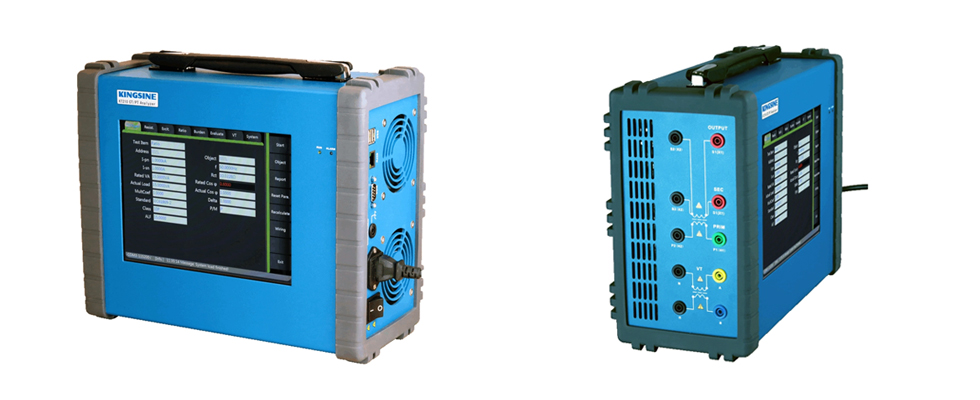In modern power systems, the demand for accurately measuring key performance parameters of transformers is increasingly critical. Kingsine's CT PT tester, is a device capable of accurately measuring various key performance parameters of transformers. The parameters it can measure include, but are not limited to, transformation ratio, ratio error, phase error, insulation performance, core quality, and volt-ampere characteristics. This tester is widely used in power systems due to its simplicity of operation, comprehensive functionality, fast testing speed, and high accuracy. Traditional CT PT testers have complex wiring for measurements, and since they measure the power frequency fundamental wave, there is significant environmental interference. As a result, although each device may be verified by the metrology bureau, the data obtained after combination often differs significantly. The precision of a CT PT tester is not actually its most important indicator. According to the verification procedures for the CT PT tester, the test error brought by the entire circuit should not exceed 20% of the transformer's class. In practice, the CT PT tester is required to display data that must be true and reliable during actual operation.

Frequency selection and filtering performance of the CT PT tester: The CT PT tester measures the fundamental wave. Since the secondary current of the standard and tested transformers both have significantly distorted error current waveforms for the second and third harmonics (up to 500%), and are modulated by high-frequency interference, the CT PT tester must have excellent frequency selection and filtering performance to separate the fundamental wave for measurement. The factors causing distortion are very complex. In low precision (below 0.5 level) transformers without saturated core compensation, the distortion is generally around 10%, which has a negligible impact. The national standard requires a harmonic attenuation of more than 32dB for calibration instruments, which is sufficient for use. However, for high-precision or transformers with a saturated core, this index is too low. This measurement is not performed in domestic verification, and manufacturers often do not provide this indicator. When purchasing a new instrument, users should compare it with older instruments like 2700, HGE2, or HE15 to determine its reliability.
The load introduced by the CT PT tester and its match with the standard transformer: The CT PT tester applies an additional load to the tested transformer, and it places a load on the standard transformer. These are strictly regulated by national procedures. Domestic metrology verification does not test these indicators, and manufacturers mostly do not provide these indicators either. However, they are one of the main reasons for different verification data from different units.
Wire load: When preparing load Z, a resistance of 0.06 ohms (some have 0.05 ohms) is reserved for connecting wires. Therefore, in tests, the sum of the resistances of the three wires A, B, and C in the diagram is required to be 0.06 ohms. In the verification of current transformers with small rated loads (10VA), this wire resistance has a significant impact on data.
Incorrect lead point of the voltage transformer load: The load line and voltage sampling line of the CT PT tester should be drawn separately from the terminals of the transformer. Sharing one line can introduce test errors due to the voltage drop on the wire.
Wiring irregularity error: With the deepening of testing technology research, instrument manufacturers have developed new standard transformers with many advantages, such as dual-stage current transformers, which can overcome the load matching problem between the standard transformer and the calibration instrument. However, if units still use wiring methods from the 1950s, it can lead to greater errors.
Ground wire: Since it is a power frequency measurement, the electromagnetic field and floating potential in the space have a significant impact on the measurement. The ground wire plays an important role in the test. It must be properly grounded according to the procedures, especially in tests above the 0.05 level or when the primary is high voltage. It is recommended that users purchase CT PT testers from manufacturers with many years of industry foundation instead of those that only produce a single item. The two differ fundamentally in theory and experience regarding CT PT testers. A correct choice ensures that all the instrument's indicators conform to procedural requirements and that all wiring and instrument matching are designed by the manufacturer, avoiding usage errors and impacting product quality.
For individuals looking for top-tier electrical test equipment for sale, investing in Kingsine's CT PT analyzer is a smart choice. With the growing complexity of electrical systems, the need for dependable, precise, and easy-to-use electrical testing equipment is paramount. Kingsine leads this vital industry, consistently advancing and ensuring reliability in electric power systems.